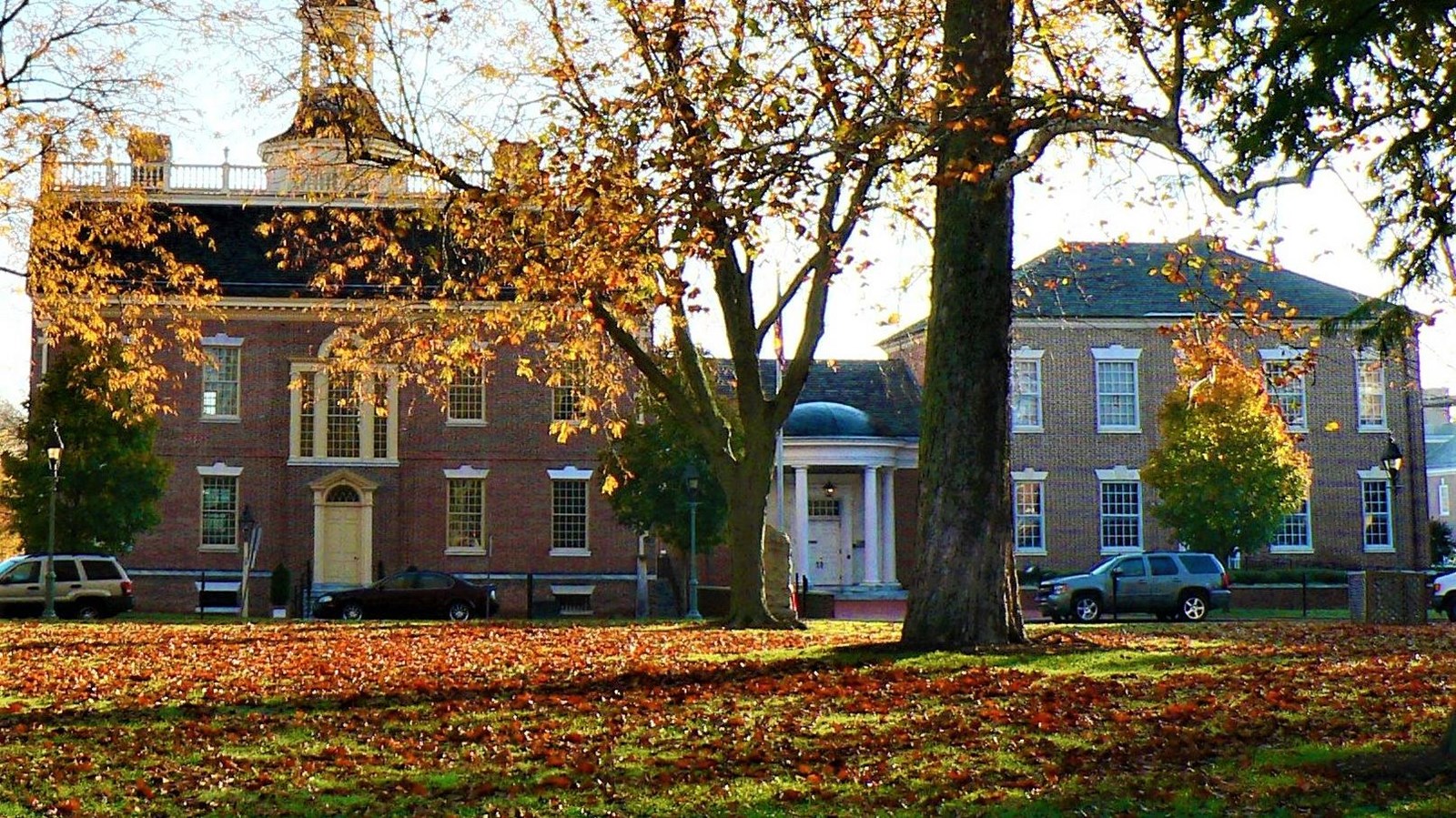Last updated: October 18, 2022
Place
The Dover Green

NPS Photo
Parking - Auto, Scenic View/Photo Spot
The Green, laid out in 1717 in accordance with William Penn’s orders, was surrounded by government buildings, shops, homes, and taverns, and quickly became the heart of Dover. It played witness to the American Revolution and, on December 7, 1787, thirty delegates (ten from each county) met on The Green at the Golden Fleece Tavern and ratified the United States Constitution, giving Delaware a place of honor as "The First State."
While The Green is most known for ratifying the United States Constitution, other significant events have taken place on it and around its margins since then. As the looming question of chattel slavery in America threatened the unity of the nation, headlines were consumed with the trial of Samuel Burris, a free Black man and Conductor on the Underground Railroad, who was arrested in 1847 for helping a woman escape slavery. He was immediately imprisoned in Dover and forced to await trial for 14 months. Eventually, he was found guilty and sentenced to be sold into slavery for seven years. Luckily for Burris, word of his plight reached abolitionists in the north and he was rescued on the auction block by an anti-slavery man posing as a buyer who, in a whisper, reassured Burris that his freedom had been purchased with abolitionist gold.
The Green captured national attention again in 1920 when Delaware had the opportunity to be the 36th (and final) state to ratify the 19th amendment, which would grant women the right to vote. Determined women like Mabel Lloyd Ridgely, Florence Bayard Hilles, and others advocated tirelessly in Delaware for the amendment’s passage. Reporters from across the country arrived to find that the “war of the roses” had come to The Green: yellow flowers were given to those in favor of the vote – known as suffragists; red roses were the symbol of chivalry and the opposing anti-suffrage movement. A fierce legislative debate was waged at The Old State House, but Delaware legislators declined to vote – leaving the deciding vote to Tennessee.
Today, The Green appears as a quiet city park, giving little hint to the depth of history shaded by its towering trees.
